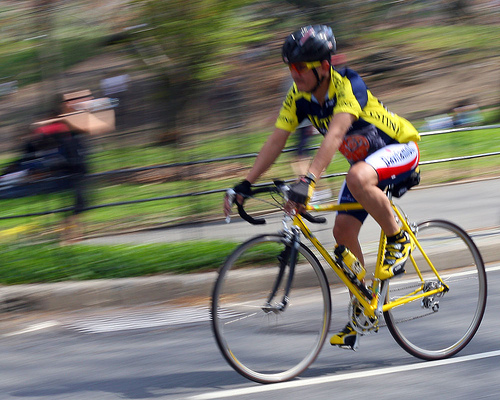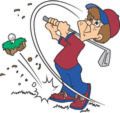|
Interactive Problem
Note: You should have Adobe shockwave player installed
in your computer for the simulations in this site to work. Follow the link below to install the player.

"Normal Gravitation"
A cyclist coast down a hill, losing 20 m in height, and then
coasts up an identical hill to the same initial vertical height. The bicycle and rider have a mass of 73.5 kg. There are two
forces acting on the bicycle/rider sytem, the weight of the bicycle and rider and the normal force exerted on the tires by
the ground. Determine the work done by each of these forces during (a) the downward part of the motion and (b) the upward
part of the motion.
Flying in Circles
A 0.60-kg and a 1.2-kg model airplane fly on horizontal circles on guidelines that are nearly parallel to the ground.
The speeds of the plane are the same, and the same type of cord is used for each guideline. The smallest circle on which the
0.60 kg plane can fly without breaking its guideline has a radius of 3.5 m. What is the radius of the smallest circle on which
the 1.2 kg plane can fly?

SLIDING SOFA
A sofa rests on a horizontal bed of a moving van. The coefficient of static friction between the sofa and
the van bed is 0.30. The van starts from rest and has a constant acceleration for a time of 5.1 s. What is the maximum distance
that the van can travel in this time period without having the sofa bed slide?

Playing Golf on the Moon: Projectile Motion
In 1971 astronaut Alan Shepard walked on the moon's surface. In a moment of whimsy, he hit a golf, which
was launched upward and followed the familiar trajectory. However, the trajectory differed from what it would have been on
earth, because the acceleration due to gravity on the moon is about six time smaller than that on earth. Consider the same
ball on earth, launched at the same angle, with the same speed.. Find the ratio of (a) the maximum height of the moon-ball
to that of the earth-ball.(b) the range of the moon-ball to the range of the earth-ball.

MOTION WITH CONSTANT ACCELERATION
A bus is stopped to pick up riders. A woman is running at a constant velocity of +5 m/s in an attempt to catch the bus.
When she is 11 m from the bus, it pulls away with a constant velocity of +1.0 m/s/s. From this point, how much time does it
take her to reach the bus if she keeps running with the same velocity?
|



